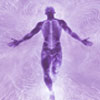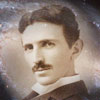The Amazing Psychic Powers of Helen Keller
 by Greta Woodrew, an eyewitness
by Greta Woodrew, an eyewitness
 One of the friendships I most remember and cherish – and one that gave me some of my profoundest insights into the world beyond the five senses – was with the remarkably brilliant, multilingual Helen Keller. She was an emotional earthquake in my life, shaking me to my very soul.
One of the friendships I most remember and cherish – and one that gave me some of my profoundest insights into the world beyond the five senses – was with the remarkably brilliant, multilingual Helen Keller. She was an emotional earthquake in my life, shaking me to my very soul.
When the play, The Miracle Worker, opened on Broadway in 1960, Dick and I went to see it and were profoundly moved. A year or so later, I took my daughter Jill to see it on her seventh birthday. She too was deeply touched by the electrifying story. Jill expressed a desire to meet Helen Keller, and I agreed that it would be a marvelous experience. My husband had a friend who knew her dedicated secretary, Evelyn Seide. Through her, we arranged a date for me to meet the great lady, who lived only ten minutes away from our home in Connecticut.
In preparation for our meeting, I studied the hand language that Miss Keller – who was deaf as well as blind – used to communicate. I also read the works of the Swedish religious teacher and mystic, Emmanuel Swedenborg, since I knew she was a Swedenborgian. I went alone on my first visit to Helen Keller, but after we became better acquainted, I asked if I could bring Jill to meet her. Miss Keller, who adored children, readily agreed.
Jill learned the hand language alphabet, and when she was introduced she slowly spelled out “How do you do, Miss Keller” in the gentle woman’s palm.
Helen lightly touched the seven-year-old’s dress and hair as she spelled out her introduction. Then she replied, in that unique, somewhat strained voice of hers, “How do you do, little dear. What a beautiful blue dress you have on and what lovely red hair you have.”
Jill was wide-eyed.
“How did she know that, Mommy?” she whispered.
“You don’t have to whisper,” I told her. “Miss Keller cannot hear or see you. She is very gifted and she uses her fingertips in place of her eyes.”
“How does she do that?” Jill demanded.
The question gave me pause, and I remember struggling to find an answer for the bewildered child. “Well,” I began, “there is normal perception through each of your five senses and there is extrasensory perception. . . .”
Jill waited for me to continue.
“Since Miss Keller has been deprived of her seeing and her hearing she has to use another way, some kind of extrasensory way, to do what she does. I don’t know what it is exactly, but I’m going to find out, because I too would like to understand it.”
The first step on the road to understanding what Helen Keller did was a thorough comprehension of how our usual five senses operate. I studied hard and, with the welcome help of several of my scientifically oriented friends, came up with an explanation that my seven-year-old could grasp. In the process of understanding normal sensory perception, NSP, for myself and for Jill, I was also building the bridge that would lead me into my work in extrasensory perception, ESP.
I learned that all sensory perception is the processing of certain waves or vibrations. Each of the senses is geared to monitor or receive these vibrations, very much like a radio receiver. When a vibration is received on the band of one of our five senses, it is converted into an electrical impulse in our neurological system and is then transmitted to the brain for interpretation. Since all sensory information is neutral, it is the interpretation of this information in the brain that describes what we see, hear, taste, smell, or touch. This is an overly simplified explanation, of course, but it enabled me to draw an analogy with which to explain the process to my small daughter.
“Jill, you know that we use our eyes for seeing, our ears for hearing, our noses for smelling, our tongues and the insides of our mouths for tasting, and our fingers and the other parts of our bodies for touching,” I told her. “Each of our five senses is very much like a radio band, but on our sensory radio bands only certain signals can be picked up. When you tune into one of the frequencies you tune into seeing or hearing or tasting–”
Jill frowned in concentration for a few minutes, then she said, “But are there other signals that aren’t on my sensory radio band?”
Pleased to see that she was getting the concept, I replied, “Yes, but your radio signal band can’t pick them up. Think about the radio in your room. It has two bands, AM and FM. You can’t listen to an FM station on your AM band, because it will not pick it up. The signal from the FM band is in your room ready to be received, but only if you turn on the FM button. Furthermore, once you lock into one band or station, all you can receive is information of one reality.”
To further illustrate my point, I told Jill the famous story about the group of deaf people who sat through a concert, testified unanimously that they had not heard any music, and offered their experience as proof positive that music did not exist. She laughed and I continued: “The main thing to remember is that you may not be able to tune into a signal or vibration because you don’t have the proper equipment, or because your equipment may not be in working order, but the signal is still there to be picked up. When the radio in your room is off, the signals that would make it play are still in your room. It’s just that nothing is turned on to pick them up.”
I still remember the excitement in Jill’s voice as she grasped the analogy and asked, “Well, isn’t that true for Helen Keller?”
“Good for you!” I exclaimed. “Even though two of her five sensory radio bands – seeing and hearing – do not work, the signals they would process if they did work are still there. Miss Keller has simply found another way to tune into them.”
In the course of my friendship with Helen Keller, I discovered that when she attended concerts and plays, she “saw” and “heard” them by the vibrations they created. Helen’s financial and personal secretary, Evelyn Seide, told me that Helen’s fingers would twitch impatiently if the music was even slightly offbeat in the pieces she knew. After delivering a lecture of her own, Helen would determine the level of applause through vibrations in her feet. At the theater, she could follow the dialogue by placing her fingers on a section of the stage. Loving sculpture as she did, she explored its mastery through her fingertips.
Since the impulses conveyed to the brain through the various sensory pathways are always the same type, the numerous nerve endings at Helen’s fingertips were able to pick up the vibrations normally reserved for the eyes and ears. When handed a rose, she could identify it as pink, yellow, red, or white, possibly through her sense of smell. It was really extraordinary, but I was not sure if it could truly be called extrasensory.
Helen was psychic, however; she had powers that went beyond her normal sensory perception. One afternoon she and I were sitting in her living room in Arcan Ridge, talking about a little ivory figure that had been given to her by the prime minister of India, Jawaharlal Nehru. “You must excuse me a moment, my dear,” my hostess said unexpectedly, and just as suddenly slumped motionless in her chair.
I stared at her in bewilderment. About two minutes later, she again sat upright in her chair. “What happened?” I asked.
“I’ve been to the Alps,” she replied calmly and proceeded to describe her visit to me for the next hour. There was no question in Helen’s razor-sharp mind that she had actually been in the Alps. Her detailed descriptions indicated that a great deal more than the two minutes in my earth time frame had elapsed. She had had what is called an astral, or out-of body experience, she told me. It was then that I realized how very much I had to learn.
Before we can hope to understand ESP, we have to expand our knowledge of NSP. The evolution of higher forms of life was accompanied by the evolution of complex sense organs. Human beings normally operate with five senses. Each sense band picks up those frequencies or energy events or vibrations that occur within the limitations of the band. The infinitesimal waves that make up visible light, for example, are picked up the eye. Our eyes, however, can barely register a single octave of the electromagnetic vibrations we call “light.” This word light can also be quite correctly applied to the electromagnetic radiations on either side of the tiny band we can see with the naked eye.
The pressure waves vibrating in the air as sounds are picked up by the ears. I came to learn that the human ear can pick up about ten octaves of these acoustic waves and record them as sound. But there is also an unconscious perception of sound waves below the “normal range.” Canadian scientist M. Persinger believes that many precognitive experiences result from this phenomenon.
The various bands detect and record all sorts of events around us – the drone of a bee on a summer day, the fragrant aroma of cookies baking, the biting wind as you ski down a high slope. These frequencies are then converted into electrical energy and transmitted to the brain in the form of nerve impulses. Science has known since the mid-nineteenth century that the nerve force is electrical.
As a result of the processing of electrical impulses in the central nervous system, we hear, taste, touch, smell, and see. The pulsings conveyed to the brain constitute the language of the nerve cells. Stimuli received through our five senses become our experienced reality or, as some people prefer to call it, our objective reality. It is all too easy for us to be unaware of our sense limitations and to classify all of our experiences within a “normal” range. And yet Helen Keller had given Jill and me proof positive that the radio bands on which we operate can be expanded. Deprived of both her audial and visual senses, Helen was nevertheless able to pick up the frequencies these two senses missed. She expanded her senses of taste, touch, and smell and was able to receive stimuli which are normally reserved for the eyes and ears. She had demonstrated that our sensory bands can be stretched to new limits. Why couldn’t a person blessed with all of his five senses likewise expand his sensory bands and awareness?
Seeing Helen Keller in action, I couldn’t help wondering if the development of a sixth sense to perceive new phenomena wasn’t actually within the grasp of all of us.
My studies had taught me that the survival of any species depends on its ability to receive and translate the proper signals. Dogs have a sense of hearing that goes from 40 to 75 percent beyond the range of humans; their sense of smell is so keen they can detect the presence of other creatures in a particular area long after they’ve moved on. Every human being leaves a “scent print” as unique as his fingerprint. Salmon, using their olfactory sense, find their way back from the open sea, many thousands of miles, to the spawning grounds they left years before. Bats and tree shrews use an extended audial band to orient themselves to the world of darkness in which they live, and migrating songbirds are equipped with tiny sensors with which to check their flight patterns against the stars. Certain tropical fish travel unerringly through the rocks and shoals of muddy rivers by means of sensors that generate an electrical field that warns them of any obstacles in their path. All these uses of the senses by these creatures are perfectly “normal” for them.
As we know, white light breaks down into ten known colors of the spectrum. (There may even be more that have not yet been discovered.) We can see seven of these colors with our naked vision. The other three require special instruments to pick up their waves. Vipers, however, can see infrared and some insects see ultraviolet.
The marvelous geometrician, educator, architect-designer, and futuristic thinker, R. Buckminster Fuller, has said that “99 percent of the transactions of the Universe are ultra and infra to man’s sensory tuning.” He goes on to say that “reality is a broad spectrum of energy events across a small portion of which our senses can ‘tune’. The Universe is the sum total of all experiences.”
The world marveled at the way Helen Keller overcame her monumental handicaps and was able to live a normal and very productive life. She did it partly through her tremendous courage and willpower, but even more by developing alternative ways of sensing the vibrations that the rest of us pick up through seeing and hearing. In the process, she also developed the ability to tune into other vibrations that are not normal to any of the five human senses, the frequencies that might be called ultra or infra – above or below the human ranges of normal sensory awareness.
I have read that universal mind encompasses a limitless range of frequencies and continuous broadcasts. The more developed and perceptive an individual mind becomes, the greater the frequency range within universal mind that consciousness can tune in to.
Extrasensory perception is the expansion of our normal bands of perception to include frequencies or bands of information not found on our regular tuners. It is also the development of a “sixth” or intuitive sense. Helen Keller was able to do this. So do people who turn around when they feel someone staring at them from behind and find they are right. You do it when you pick up the telephone and say “hello” by name to the person on the other end of the line before he or she has spoken. Businessmen who get gut feelings or business hunches do it too, but too many of these so-called pragmatists prefer to label this instinct “judgment.” And I do it, because I’ve worked long and hard to develop the ability to tune into the frequencies outside most people’s normal ranges. My objective reality goes beyond ordinary sensory perceptions. A great many of the happenings, sights, and sounds that I’ve experienced on what I like to think of as my ultra high frequency or UHF band are far more subtle, and yet far more precise, than the things I have experienced with my five normal senses.
I learned a great deal from my friendship with Helen Keller, and my memories of that great lady are still very much alive. I was standing with Helen on her terrace one sunny day when she whistled softly. There was rustling in the nearby treetops, and suddenly a dozen or more birds flew out of the branches and lighted on the terrace. One hopped right onto Helen’s outstretched hand.
It was a charming and somewhat awesome sight, and I couldn’t help sharing my reactions with Helen. “Oh, I wish my children could have seen you with those birds today,” I tapped into her palm as I was saying goodbye.
On my next visit, Helen asked me to summon her gardener. “And tell him to bring in the surprise he made for you,” she said.
The gardener appeared. I knew he had constructed the assortment of beautiful birdhouses and feeders that dotted Helen’s property. Now he was carrying two more birdhouses – one an “apartment building” for martins, the other, a tiny wren house.
My eyes filled with tears as Helen gently murmured, “For you and the children, my dear, so that you can see and hear the birds that I cannot.”
Those lovely birdhouses still hang in our trees. The large one is in a clump of birch by the terrace, and the wren house perches in a handsome old oak. We have enjoyed watching and listening to our martins and wrens for well over a decade, but I never do so without recalling Helen Keller, who, in spite of being blind and deaf, could – in her own way – see and hear them too.
Excerpt from On A Slide Of Light
Posted in Other Topics, Psychic Phenomenawith comments disabled.





